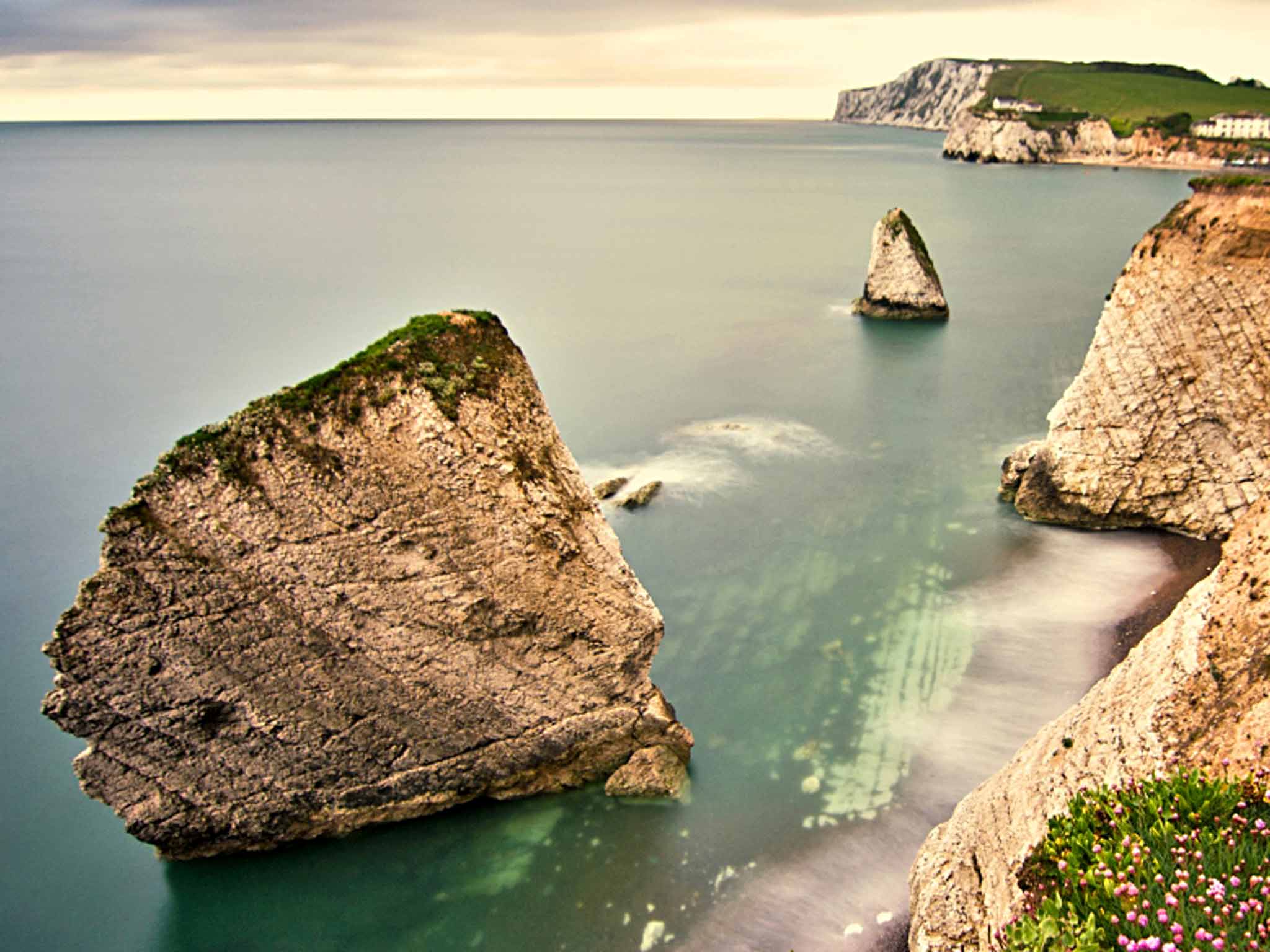The Independent's journalism is supported by our readers. When you purchase through links on our site, we may earn commission.
Julia Margaret Cameron's Isle of Wight: The pioneering photographer who snapped celebrities in her shed
She persuaded distinguished visitors such as Darwin, Longfellow and Trollope into her converted chicken shed.

Queen Victoria may have famously loved the Isle of Wight, but it wasn't Osborne House that hosted most of the island's celebrity visitors in the 19th century – it was a converted chicken coop in sleepy Freshwater Bay. The hen house stood in the grounds of Dimbola Lodge, home of pioneering photographer Julia Margaret Cameron (1815-1879) and served as her studio. Next Thursday marks the bicentenary of her birth, and later this year the 150th anniversary of her first, and only, exhibition at the South Kensington Museum (now the Victoria and Albert Museum) will be celebrated in exhibitions at the V&A and the Science Museum.
I've come to explore the spot where she captured some of the most compelling images of the Victorian age. Set in the Isle of Wight's south west, Freshwater Bay retains an air of quiet distinction with handsome Victorian villas, picturesque cottages, a historic grocer's and a thatched church – it is beside the sea, but not the seaside.
I spot Dimbola Lodge easily, a rambling property with a peculiarly ugly central mock-Gothic tower. Cameron bought it on a whim while visiting Alfred, Lord Tennyson who lived nearby at Farringford House. Sadly, her studio is long gone but Dimbola, saved from demolition in the 1990s, is now a museum and gallery.
A child of the Empire – born in India, educated in Europe, fluent in French and Hindi – Cameron was extraordinarily well-connected: William Makepeace Thackeray was a childhood playmate and she had a long friendship with the astronomer Sir John Herschel. After marrying a wealthy Scotsman, Charles Hay Cameron, she became a society hostess, first in Calcutta and later in London. "She hosted everyone from Thomas Carlyle to Robert Browning and Holman Hunt," explains guide John Evans. "She also got to know Henry Cole, the V&A's founding director." Freshwater was a rural backwater when she settled in 1860 but she soon established a dazzling literary and artistic salon. I find some of her works on the first floor, which has captivating views of the bay.
Cameron is best known for her portraits – deliberately blurred and artfully composed close-ups, with powerful interplay of light and shade. They won her a gold medal in Berlin, although the photographic establishment disliked them. She took up photography at Dimbola, aged 48: "Her first camera was a present from her daughter and son-in-law," says Evans. "They bought it to cheer her up while her husband was inspecting his coffee plantations in Ceylon and her children were away."
The gift was a hit. Soon, Cameron was experimenting in her makeshift studio and dark room (a converted coal bunker) determined to elevate the "dark art", as photography was then known, to high art. She would stand in her bedroom, recreated here, and watch the road for passing photogenic locals, sending her maids to chase after them and ask them to sit for her. She soon persuaded distinguished visitors such as Darwin, Longfellow and Trollope, into her converted chicken shed.
She made prints from wet collodion negatives, using dangerous chemicals which so blackened her hands that Garibaldi took her for a servant when he met her at Farringford. The works displayed range from tableaux – her husband as a white-haired King Lear – to dreamy compositions inspired by Caravaggio and Raphael. Tennyson, thoughtful and black-bearded, is pictured in what he called the "Dirty Monk" pose.
"Pomona" is particularly compelling: a striking young woman, framed by foliage, gazing defiantly at the camera. She looks strangely familiar. I read the label and see that it's Alice Liddell, Lewis Carroll's muse, whose family stayed in Freshwater during the 1860s. Carroll was a regular visitor, too and another of Cameron's subjects, though he disliked her "big heads" and criticised their fuzzy focus. When I go for a stroll I discover that his residence, Holly Tree Cottage, was practically opposite the Liddell's Whitecliff House.
This corner of the island, with its old drovers' trails, abundant hedgerows and chalky glades, offers enticing walks. I follow a footpath on to the high down and am rewarded with panoramic views of turquoise seas and bone-white cliffs. Despite its picturesque attractions, Cameron never photographed the landscape – it was people that inspired her. She once said taking pictures of famous men was like "the embodiment of a prayer".
In 1875, at the peak of her fame, Cameron packed up her camera and moved to Ceylon. She never returned and the island soon lost its celebrity sparkle. But after this year's exhibitions, the Isle of Wight's star could be on the rise once more.
Getting there
Wightlink (0333 999 7333; wightlink.co.uk) sails from Lymington to Yarmouth, the closest port to Freshwater. It also has a car ferry from Portsmouth to Fishbourne, and catamarans from Portsmouth Harbour to Ryde (22 minutes, foot passengers only, from £24.40 return). Esplanade Car Hire (01983 562322; esplanade.co.uk/car-hire) is located near the Ryde terminal.
Visiting there
Dimbola Lodge (01983 756814; dimbola.co.uk). Daily 10am-5pm, £4.50.
Osborne House (01983 200022; english-heritage.org.uk). Daily 10am to 6pm until 30 Sept. House and grounds £14.30, non-members.
Staying there
The George Hotel, Quay Street, Yarmouth (01983 760331; thegeorge.co.uk). Doubles from £195, B&B.
Eating and drinking
The New Inn, Shalfleet (01983 531314; thenew-inn.co.uk).
More information
Subscribe to Independent Premium to bookmark this article
Want to bookmark your favourite articles and stories to read or reference later? Start your Independent Premium subscription today.

Join our commenting forum
Join thought-provoking conversations, follow other Independent readers and see their replies